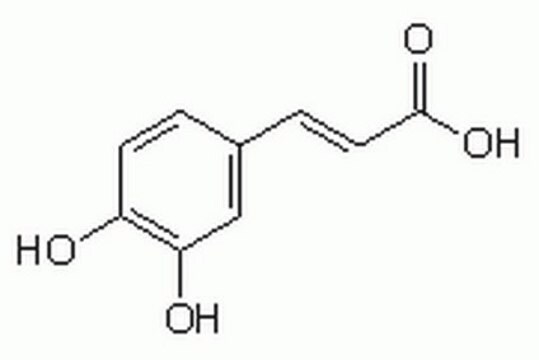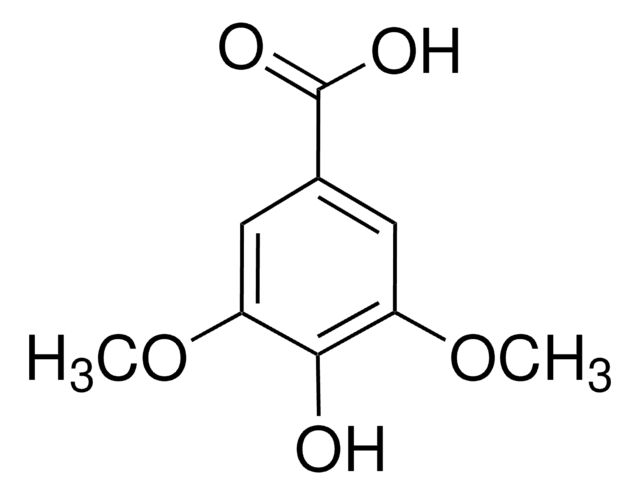C0625
Caffeic acid
≥98.0% (HPLC)
Synonym(s):
3,4-Dihydroxybenzeneacrylic acid, 3,4-Dihydroxycinnamic acid, 3-(3,4-Dihydroxyphenyl)-2-propenoic acid
About This Item
Recommended Products
Quality Level
Assay
≥98.0% (HPLC)
form
powder
mp
211-213 °C (dec.) (lit.)
solubility
ethanol: 50 mg/mL
application(s)
metabolomics
vitamins, nutraceuticals, and natural products
SMILES string
OC(=O)\C=C\c1ccc(O)c(O)c1
InChI
1S/C9H8O4/c10-7-3-1-6(5-8(7)11)2-4-9(12)13/h1-5,10-11H,(H,12,13)/b4-2+
InChI key
QAIPRVGONGVQAS-DUXPYHPUSA-N
Gene Information
human ... ELA2(1991)
rat ... Alox5(25290)
Looking for similar products? Visit Product Comparison Guide
General description
Application
Biochem/physiol Actions
Features and Benefits
related product
Signal Word
Warning
Hazard Statements
Precautionary Statements
Hazard Classifications
Carc. 2
Storage Class Code
11 - Combustible Solids
WGK
WGK 3
Flash Point(F)
Not applicable
Flash Point(C)
Not applicable
Personal Protective Equipment
Regulatory Listings
Regulatory Listings are mainly provided for chemical products. Only limited information can be provided here for non-chemical products. No entry means none of the components are listed. It is the user’s obligation to ensure the safe and legal use of the product.
JAN Code
C0625-25G:
C0625-2G:
C0625-VAR:
C0625-5G:
C0625-BULK:
Choose from one of the most recent versions:
Already Own This Product?
Find documentation for the products that you have recently purchased in the Document Library.
Customers Also Viewed
Protocols
HPLC Analysis of Polyphenols in Nero d'Avola Red Wine on Discovery® HS C18 (UV 280 nm)
Coumaric acid; Quercitrin; Myricetin; Quercetin
Our team of scientists has experience in all areas of research including Life Science, Material Science, Chemical Synthesis, Chromatography, Analytical and many others.
Contact Technical Service











